Digital Poster
Myocardium I
ISMRM & ISMRT Annual Meeting & Exhibition • 10-15 May 2025 • Honolulu, Hawai'i

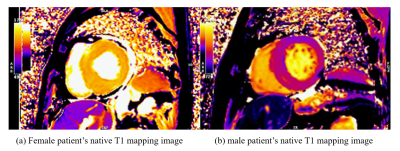 |
Computer Number: 49
4174. Study
on gender difference in left ventricular myocardial fibrosis in
hypertrophic cardiomyopathy based on T1 mapping technology
Z. Li
West China Hospital of Sichuan University, Chengdu, Sichuan Province, China
Impact: Previous research on gender differences often
treated gender as an incidental finding and supplementary
result,lacking specialized clinical studies to analyze
phenotypic differences caused by gender.T1 mapping can
identify myocardial fibrosis differences that traditional
LGE cannot detect, demonstrating broad application
prospects.
|
|
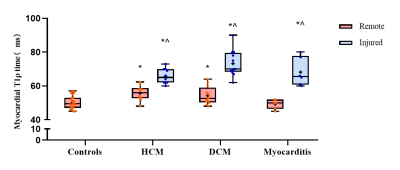 |
Computer Number: 50
4175. Assessment
of myocardial injuries in non-ischemic cardiomyopathy using
magnetic resonance T1-rho mapping
J. Xu, X. Yue, H. Jin, M. Zeng
Zhongshan hospital of FUdan University, Shanghai, China
Impact:
T1ρ mapping presents a promising, non-contrast approach for assessing chronic myocardial injury in NICM. And T1ρ mapping presents its potential as an early indicator of chronic myocardial damage, offering insights into arrhythmia or heart failure risk. |
|
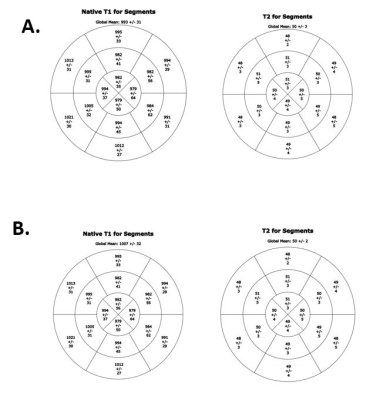 |
Computer Number: 51
4176. Diagnosis
of immune-checkpoint inhibitor myocarditis using cardiovascular
MRI, a specificity study
E. Morgan, M. Glavache, C. Benton, S. Davis, D-Y Kim, A.
Gray, G. Weissman, A. Barac, M. Carlsson
NIH/NHLBI, Bethesda, United States
Impact: Among cardio-oncology patients not receiving
ICIs, prevalence of T1 abnormalities is high which could
lead to low specificity of CMR in diagnosis of acute
myocarditis. Using both T1 and T2 criteria would improve the
specificity.
|
|
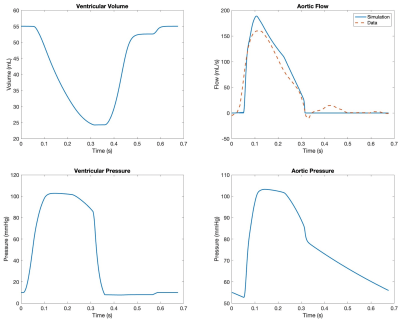 |
Computer Number: 52
4177. Cardiac
MR and biomechanical model-assisted framework for the assessment
of healthy left ventricular energetics
D. Young, T. Hussain, M. Gusseva
Children's Medical Center Dallas, Dallas, United States
Impact: The framework enables noninvasive PV loop
assessment, providing a new tool for evaluating cardiac
energetics in healthy individuals. This can improve our
understanding of cardiovascular health and serve as a
reference for identifying deviations in affected
populations.
|
|
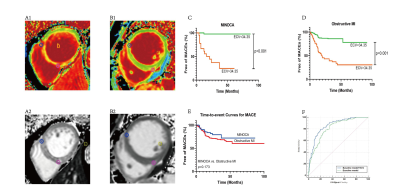 |
Computer Number: 53
4178. Prognostic
value of extracellular volume fraction in myocardial infarction
and myocardial infarction with nonobstructive coronary arteries
B. Li, X. Wang, H. Gu
Shandong First Medical University, Jinan, China
Impact: ECV demonstrated a strong prognostic association
with MACEs and provided additional predictive value beyond
common clinical and CMR risk factors. Furthermore, MINOCA is
not a benign disease, their long-term prognosis is as poor
as that of patients with obstructive MI.
|
|
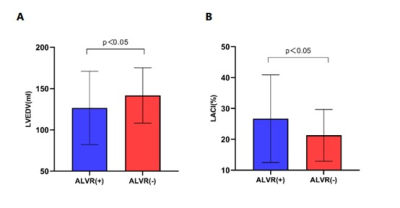 |
Computer Number: 54
4179. Diagnostic
value of CMR-derived left atrioventricular coupling index for
predicting adverse left ventricular remodeling STEMI patients
r. Bo, x. Lian, P. Hou, H. Wang
Beijing Anzhen Hospital, Capital Medical University, Beijing, China
Impact: The impact of this study clarifies that baseline
LACI in STEMI patients independently predicts ALVR after 6
months. This finding introduces a novel CMR parameter for
early risk stratification, potentially guiding clinical
interventions and enhancing patient outcomes.
|
|
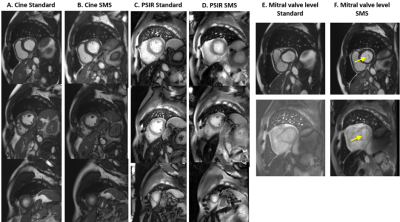 |
Computer Number: 55
4180. Simultaneous
multislice cine and phase sensitive inversion recovery short
axis cardiac imaging using Pilot-Tone triggering: early
experience
R. Lim, D. Staeb, D. Monigatti, L. Cuneen, P. Speier, E.
Hornsey, J. Theuerle
Austin Health, Melbourne, Australia
Impact:
SMS cine and PSIR imaging using pilot-tone triggering is feasible in healthy volunteers with diagnostic image quality and comparable functional parameter measurements. Further experience including in a patient population is now planned. |
|
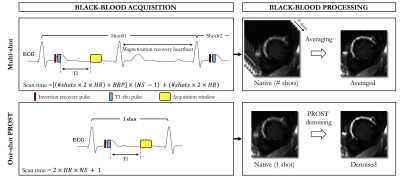 |
Computer Number: 56
4181. One-shot
black-blood late gadolinium enhancement imaging combined with
PROST denoising for fast and accurate myocardial scar imaging
V. de Villedon de Naide, K. Narceau, B. Durand, T. Kuestner,
T. Génisson, T. Richard, M. Villegas-Martinez, P. Jaïs, M.
Stuber, H. Cochet, A. Bustin
IHU LIRYC, Electrophysiology and Heart Modeling Institute, Université de Bordeaux – INSERM U1045, Bordeaux, France
Impact: The proposed black-blood one-shot PROST imaging
permits faster planning for MR technicians, simplified
interpretation for the medical professionals through
qualitative and quantitative images without residual motion
artifacts and more comfort for the patient, promoted by
free-breathing acquisition.
|
|
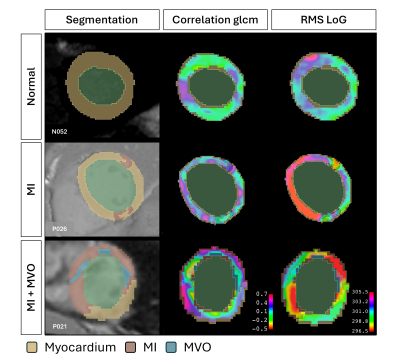 |
Computer Number: 57
4182. Combining
deep learning and radiomics for a fully automated and
reproducible assessment of myocardial viability
J. Santinha, M. N. Trinh, T. Correia
Champalimaud Foundation, Lisbon, Portugal
Impact: RAMI.dl combines deep learning and radiomics to
automatically detect and quantify the regions of
microvascular obstruction and scar tissue from LGE images,
essential in the diagnosis and prognosis of patients
suffering from myocardial infarction.
|
|
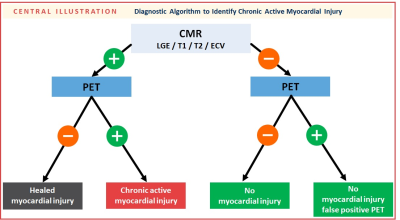 |
Computer Number: 58
4183. Detection
and Classification of Myocardial Injury Using Hybrid CMR/FDG-PET
Imaging in Long COVID Patients
P. Krumm, H. Dittmann, J. Brendel, K. Nikolaou, M. Gawaz, C.
la Fougère, S. Greulich
University of Tuebingen, Tübingen, Germany
Impact: This study establishes hybrid CMR/FDG-PET as a
valuable diagnostic tool for precise myocardial injury
characterization in long COVID, enabling tailored treatment
strategies. It opens avenues for investigating chronic
myocardial inflammation's long-term effects, potentially
transforming patient management and outcomes.
|
|
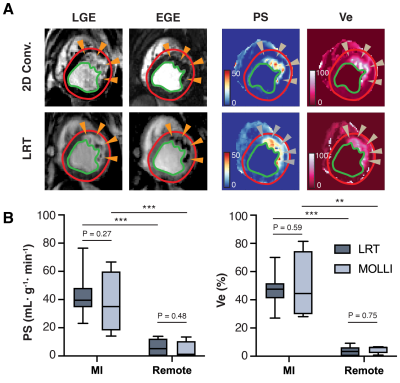 |
Computer Number: 59
4184. Quantitative
Characterization of Myocardial Reperfusion Injury via
Push-Button Delayed-Phase Dynamic Contrast-Enhanced (dDCE) MRI
X. Zhang, L-T Huang, H-J Yang, X. Li
Cedars-Sinai Medical Center, Los Angeles, United States
Impact: LRT-dDCE demonstrated the potential of a
clinically viable sequence to quantitativelyassess
myocardial injury. The dDCE parameters can potentially
provide detailedinsights post-ischemic impact and during
tissue healing.
|
|
 |
Computer Number: 60
4185. Radiomic
Analysis of CMR for Prediction of Left Ventricular Mass Index
Changes in Subsequent Year for Fabry Disease
P-H Chiu, M-T Wu, J-H Peng, N-Y Pan, T-Y Huang, H-W Chung,
H-H Peng
National Tsing Hua University, Hsinchu, Taiwan
Impact: Radiomic
analysis of CMR cine images demonstrated good performance in
distinguishing increased LVMi from stable LVMi patients,
providing a novel approach for predicting the changes of
LVMi in patients with FD in the subsequent follow-up year.
|
|
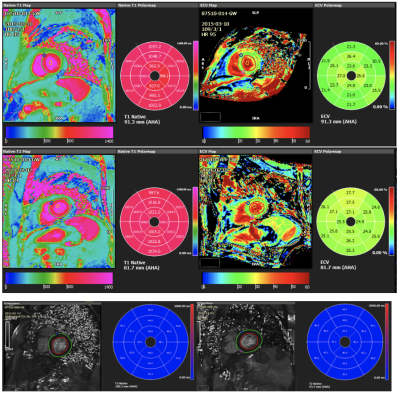 |
Computer Number: 61
4186. Longitudinal
Changes in Cardiac MRI-Derived Myocardial Tissue and Function
Parameters in Heart Transplant Recipients
C. Pfister, R. Sarnari, K. Lin, S. Pantano, A. Zbihley, S.
Quinn, J. Engel, C. Raikar, J. Carr, M. Markl
Northwestern University , Chicago, United States
Impact: The results from this study provide important
insights into the longitudinal changes of myocardial tissue
characteristics in HTx patients monitored for CAV,
suggesting increased collagen deposition possibly driven by
subclinical myocardial ischemia.
|
|
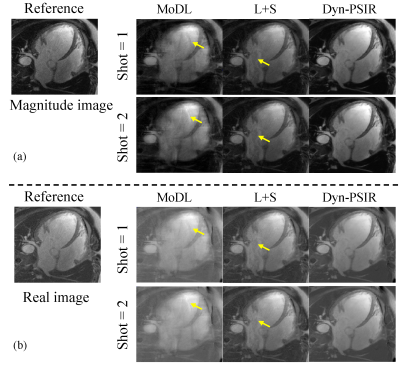 |
Computer Number: 62
4187. Dynamic
Cardiac Late Gadolinium Enhancement Imaging Using Deep
Equilibrium Models
Y. Liu, Y. Yang, J. Cheng, Z. Cui, Q. Zhu, Y. Wang, W. Fan,
D. Liang, Y. Zhu
Shenzhen Institute of Advanced Technology, Chinese Academy of Sciences, Shenzhen, China
Impact: The proposed method could greatly reduce the
scan time of PSIR data acquisition and achieve high quality
images, therefore has a broad spectrum of potential clinical
applications.
|
|
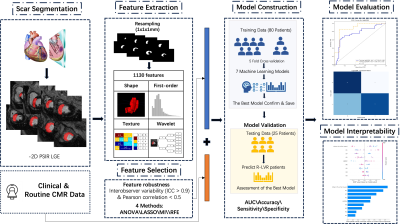 |
Computer Number: 63
4188. An
Interpretable Radiomics-based ML Model for Predicting Reverse
Left Ventricular Remodeling in STEMI Patients Using LGE of
Myocardial Scar
X. Yue, J. Cui, J. Qi, M. Hu, J. Li, S. Huang, T. Li, K. He
Medical Innovation Research Department, Chinese PLA General Hospital, Beijing, China
Impact: This study advances r-LVR prediction in STEMI
patients improving clinical outcomes. By combining radiomics
with traditional CMR markers, it enables a deeper
understanding of myocardial remodeling processes,
potentially guiding future studies on cardiac tissue
characterization and predictive modeling.
|
|
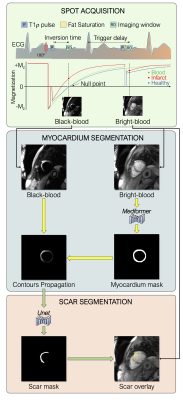 |
Computer Number: 64
4189. Automated
myocardial scar segmentation on joint bright- and black-blood
late gadolinium enhancement images
T. Génisson, V. de Villedon de Naide, K. Narceau, B. Durand,
J-D Maes, M. Villegas-Martinez, T. Richard, K. He, P. Gut,
P. Jaïs, M. Stuber, H. Cochet, A. Bustin
IHU LIRYC, Heart rhythm disease institute, Université de Bordeaux – INSERM U1045, Bordeaux, France
Impact: The proposed artificial intelligence-based
pipeline exploits anatomical information and improved scar
visualization from joint bright- and black-blood
images. This permits fast, operator-independent, and
time-saving scar segmentation and analysis for the
radiologist, with required clinical quality to better help
guide therapy.
|
The International Society for Magnetic Resonance in Medicine is accredited by the Accreditation Council for Continuing Medical Education to provide continuing medical education for physicians.